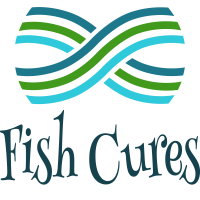 |
About Us |
|---|
Know Your Parameters
It seems like early Spring and late Fall there is a significant change to water parameters and fish seem to come down with more disease that other times of the year. Knowing what to watch for can help reduce stress on your fish and potentially avoid disease.
Have you noticed an increase in chlorine or chloramine smell in city water? In the Spring many water treatment plants often flush their systems. And the sudden increase in chlorine or chloramine may require extra dechlorinator than is normal. There are test kits to monitor chlorine, but the best test is your nose. If using a water conditioner such as Seachem Prime, it can be safely dosed 5 times normal strength when needed. Better safe to use extra conditioner than to have dead fish.
Has your area recently undergone a heavy rainstorm or experienced a recent snow runoff? This can change the general water chemistry. A quick water test can help determine if the pH and other parameters have changed or remain stable. For me, I have two different water sources. One source I get about 9 months out of the year. It comes from a local spring with very soft, low pH water and my other source is moderately hard water that is high in minerals and a high pH. If I’m not careful when the source water changes a large water change can kill my fish. Unfortunately, this has happened to me once. I lost thousands in rare, irreplaceable fish.
Have you recently moved? Doesn’t matter if in the same town or across the country. Every water source can have some difference; different pipes can rarely affect water chemistry as well. Again, knowing what you are dealing with and how close it matches your tank parameters is all that is needed to make educated adjustments to keep your fish safe at all times.
Periodically test your source water to determine what is normal. Does it contain high levels of minerals? Does it hold heavy metals? You can obtain the basic details of your water chemistry from your municipal water company or by paying for a water analysis if on a well. Or, can use a test kit, such as the API Master Kit plus the GH and KH tests for a good overall general analysis of your source water.
Compare these results with your tank parameters. If things are being well maintained then both the source and the tank water should have similar parameters. And stable parameters in the proper range is the key to long term health of your fish.
For example, are there any measurable ammonia or nitrites? If so, your tank may not be cycled or it may be under-filtered. Simple enough to fix if you know what is leading to measurable ammonia and/or nitrite. Both should always be undetectable.
Is nitrate over 40ppm? Do you have species sensitive to waste? Are you fish coming down with one disease after another? Then, need to step up maintenance to better manage waste buildup.
By providing a healthy environment along with a variety of high quality foods you will be able to enjoy your fish for a long time.